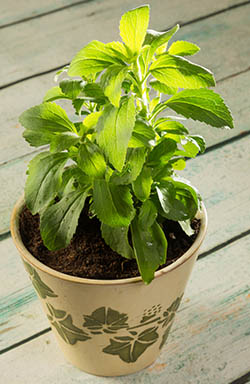You can’t open a newspaper, or turn on the nightly news, without being hit over the head with how dangerous sugar is.
But the truth is, sugar is NOT a bad thing…
Humans evolved to eat sweet things. It’s how our ancestors knew a food growing in the wild was safe to eat. In fact, there are no naturally sweet foods that are harmful to your health.
The real problem comes when sugar is changed from its pure form and processed into something unnatural.
The sugar industry has known this for more than 50 years.
And since 1967, they have been manipulating science to sell more sugar.
Let me explain…
In 1967, the Sugar Research Foundation (SRF) funded its own secret research on the effect of processed sugar on rats. It was called Project 259.
Before the results could be published, SRF pulled the plug on Project 259.
But recently researchers from the University of California in San Francisco found the results of this secret research.1
It turns out the SRF scientists discovered that processed sugars could raise the level of blood fats called triglycerides that are linked to heart disease. They also found that this kind of sugar was linked to bladder cancer.
Those results would have been deadly for the sugar industry. No wonder they buried the study!
But the truth is now comin
g out.Research in the BMJ journal OpenHeart points to processed sugar as a bigger threat than salt when it comes to blood pressure and heart disease.2
Other studies clearly show the link between cancer and processed sugar.3
I help my patients stay young and avoid chronic diseases by keeping their sugar intake as low as possible.
But here’s the thing…
When I talk about sugar I don’t just mean a teaspoon of sugar in your coffee.
I mean all the foods and drinks that easily break down into sugar when you eat them.
Things like bagels, bread, pasta, crackers and pretzels will get you to the same place as sucking on a few lumps of sugar. Sugar is also hidden in most processed foods like ketchup, salad dressings and canned soup.
That’s the sugar you have to watch out for.
Your body was NOT designed to handle all that unnatural sugar…
It has led to a modern pandemic I’ve named Syndrome Zero. With Syndrome Zero your body pumps out too much insulin. It builds up in your bloodstream. Your body becomes insulin resistant. Your cells become starved for energy. And you become vulnerable to virtually every disease.
I see it more and more in my patients every year. They’re struggling with weight, diabetes, heart disease, cancer… the list goes on and on.
You can cut back on this sugar overload by eliminating breads, pasta and other grains. And replace table sugar with a healthy alternative like stevia.
Stevia is a natural sweetener you can add to your food without risking your health. It’s between 10 to 300 times sweeter than traditional white sugar.
This leafy herb has been used for centuries by native South Americans. In fact, the Guarani originally called it Stevia Kaa-he, meaning sweet herb. Today it sometimes goes by the name sweetleaf or sugarleaf.
Stevia does not affect blood sugar levels and has zero calories. But there is a caveat…
Like a lot of foods that have become mainstream, this once all-natural herb is morphing into an artificial sweetener that’s barely safer than some of the others like aspartame or Splenda.
Today’s processed stevia is mixed with chemical fillers like GMO corn Erythritol, inulin fiber or even cane sugar.
I recommend buying pure dried stevia in bulk. It’s available as a fine green powder. Or try growing your own from organic seeds. They do great on a windowsill. Here’s how to grow and harvest your own stevia plants.

Growing your own stevia ensures that it’s 100% natural with no added chemical fillers.
Grow Your Own All-Natural Sweetener
- Choose organic, non-GMO seeds.
- Sow seeds in ¼ inch organic soil. Place in a windowsill that gets three to four hours of sunlight a day.
- Water as often as needed to keep soil moist, but not overly wet. Wilted leaves are a sign of too little moisture. But they’ll revive quickly with watering.
- Don’t let your stevia form flowers. Your leaves will lose a lot of their sweetness. Nip all buds as soon as you see them.
- To harvest, remove the leaves from the stems. Air dry for 12 hours.
- Place a handful in your coffee grinder and grind to a fine powder. You can also use a mortar and pestle. Store in an airtight container in a cool dry place.
To Your Good Health,
![]()
Al Sears, MD, CNS
1. Kearns CE, Apollonio D, Glantz SA “Sugar industry sponsorship of germ-free rodent studies linking sucrose to hyperlipidemia and cancer: An historical analysis of internal documents.” PLoS Biol 2017;15(11): e2003460. https://doi.org/10.1371/journal.pbio.2003460.
2. James J. DiNicolantonio and Sean C Lucan, “The wrong white crystals: not salt but sugar as aetiological in hypertension and cardiometabolic disease.” Open Heart 2014;1: doi:10.1136/openhrt-2014-000167.
3. Jiang Y, Pan Y, Rhea PR, et al. “A sucrose-enriched diet promotes tumorigenesis in mammary gland in part through the 12-lipoxygenase pathway.” Cancer research. 2016;76(1):24-29. doi:10.1158/0008-5472.CAN-14-3432.

